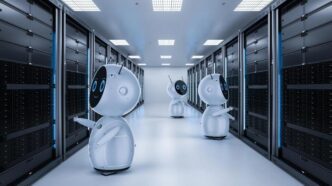The next generation of AI data centers may become the most expensive infrastructure projects in tech history. A new study suggests that by 2030, building just one leading AI data center could cost up to $200 billion, draw as much electricity as nine nuclear reactors, and house over two million AI chips.
This startling forecast comes from researchers at Georgetown University, Epoch AI, and RAND, who analyzed over 500 data center projects worldwide between 2019 and 2025. Their findings reveal an alarming trend: as AI capabilities rapidly scale, the costs and energy demands of supporting that growth are skyrocketing just as fast.
The Soaring Cost of AI Infrastructure
AI data centers are evolving at breakneck speed. Since 2019, hardware costs have nearly doubled each year, while power needs have climbed just as fast. Case in point: xAI’s Colossus data center, which costs an estimated $7 billion and draws a staggering 300 megawatts — enough to power 250,000 homes.
Even with efficiency gains — such as a 34% yearly boost in performance per watt — these improvements are being outpaced by demand. If current trends continue, researchers say a top-tier AI data center will need 9 GW of power by mid-2030. That’s roughly the output of nine nuclear reactors, all to fuel just one facility.
Tech giants aren’t shying away from this challenge. OpenAI, backed by SoftBank and others, is reportedly trying to raise up to $500 billion to build a network of AI data centers. Meanwhile, Microsoft, Google, and AWS are spending hundreds of millions of dollars expanding their own compute infrastructure.
Environmental and Economic Strains Are Mounting
Beyond the financial strain, AI data centers are raising serious environmental concerns. A recent Wells Fargo report estimates data center electricity use will rise 20% by 2030 — and that could push renewable energy to its limits. Since solar and wind are weather-dependent, experts fear a shift back to fossil fuels may be unavoidable.
Water consumption is another major issue. Cooling systems in large data centers often use huge volumes of water, putting pressure on local resources. Then there’s the tax burden. A study by watchdog group Good Jobs First found that 10 U.S. states lose over $100 million each year due to tax breaks handed out to attract data center projects.
While some hyperscalers have reportedly pulled back on data center plans recently — with Cowen analysts noting a “cooling” in early 2025 — the long-term trajectory still points to explosive growth. If AI continues to be woven deeper into our everyday lives, the infrastructure behind it will need to scale rapidly — raising a critical question: can innovation keep pace with sustainability?












